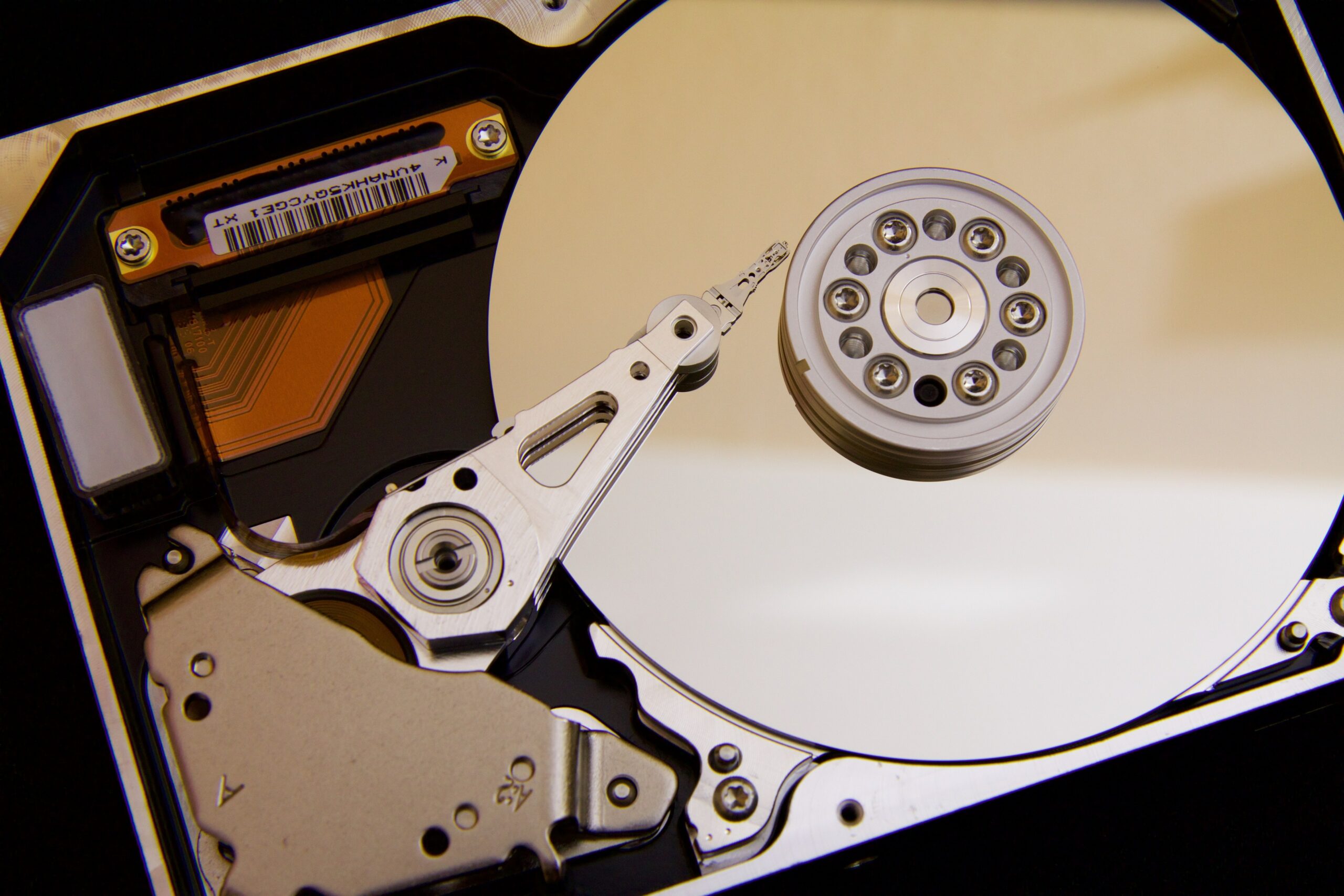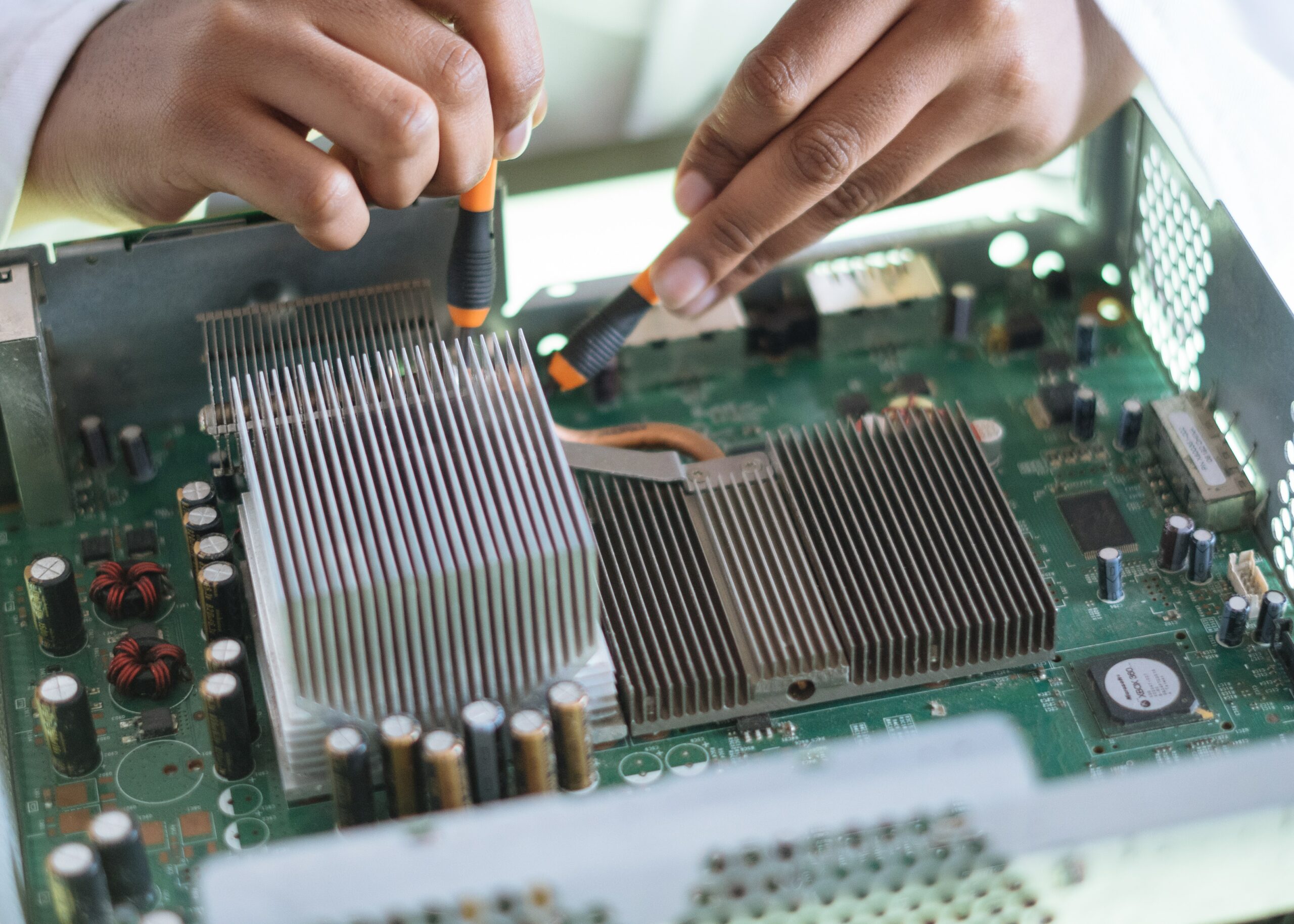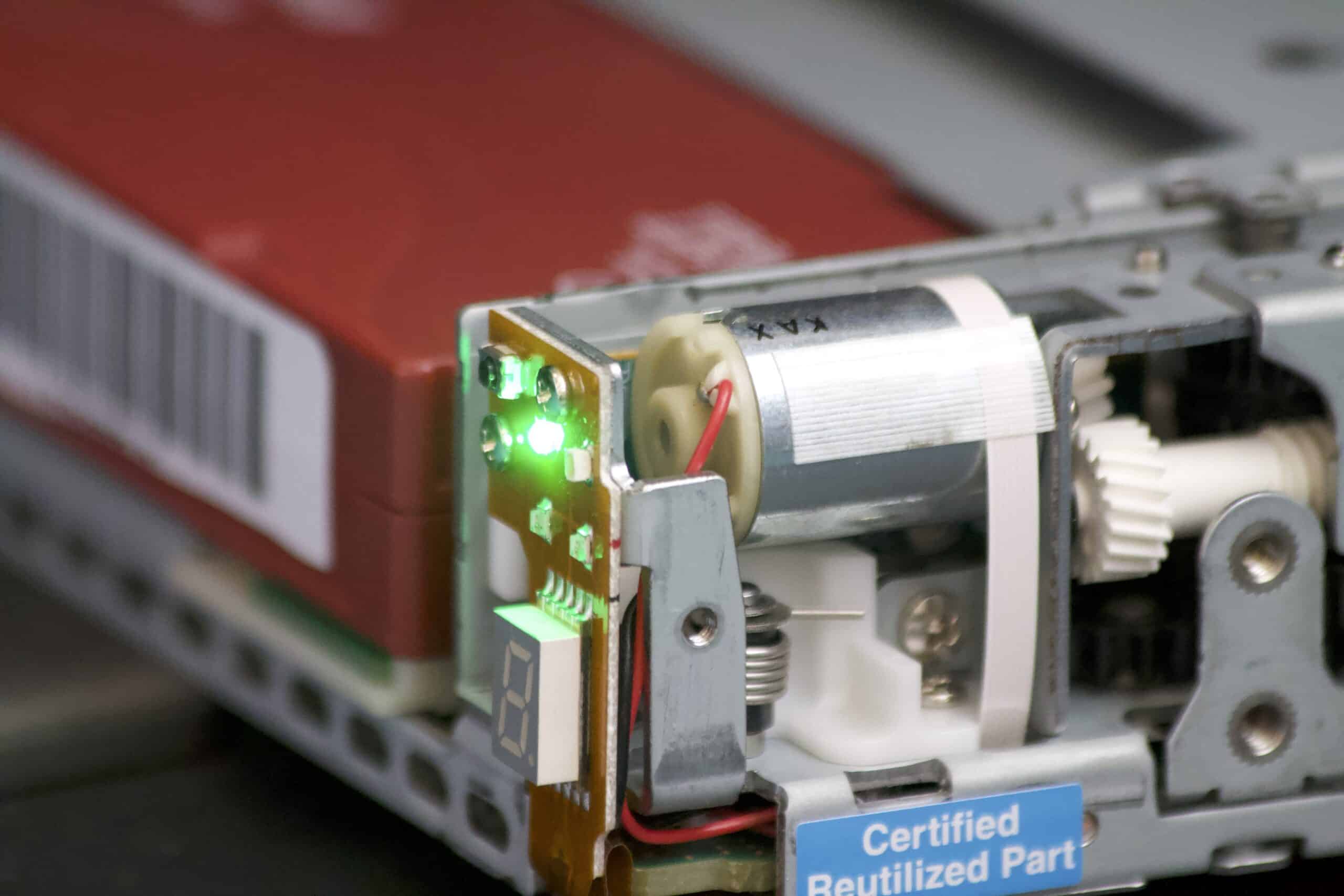Authorised Chasing ROV Repair Centre
Gentronics are the UK certified in & out of warranty service provider for the full range of Chasing Remotely Operated Vehicles.
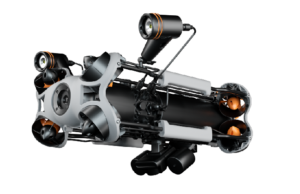 Gentronics Solutions Ltd. are proud to announce its agreement to represent Chasing as the authorised Chasing ROV Repair Centre for in & out of warranty repair across the full range of Chasing underwater products.
Gentronics Solutions Ltd. are proud to announce its agreement to represent Chasing as the authorised Chasing ROV Repair Centre for in & out of warranty repair across the full range of Chasing underwater products.
Based in Wiltshire, Gentronics are specialist in the repair & service of electromechanical devices. From Remotely-Operated-Vehicles to robotics, across a wide range of industries.
Our repair centre is purpose-built to provide the highest quality of repair, using the manufacturer's approved parts and processes.
Our engineers have vast experience in operating & servicing ROV and drones, so all care is taken to ensure that your device is fully tested and operating well within its specifications and to its full capabilities.
All ROVs, once repaired & tested within the repair centre, undertake further environmental testing and are operated fully submerged in our test pool.
More information on the full range of Chasing ROV's can be found here.
How to book your Chasing ROV Repair Centre service: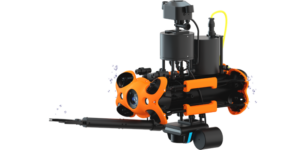
Please contact our repair centre by email or phone and our Customer Service team will be happy to provide you with the details on how to send us your ROV & check your warranty status. Call: +44 (0)1380 819 663 Email: info@gentronics.co.uk
When the drone arrives at the repair centre we will provide a detailed quotation.
We will notify you once your service is complete and can arrange the return or pick-up to suit.
In the meantime, should you have any questions, please do not hesitate to get in contact.
Full repair capabilities, including;
- Local UK repair centre
- Experienced Drone & ROV Repair Technicians
- Original Chasing parts used
- Full ROV test & service
- In & Out of Warranty Repair
- Complete submerged testing
Gentronics provide a full in/out warranty service across the range of Chasing vehicles. Please contact us directly to book in your ROV for repair and service.
Best methods for Hard Drive Data Sanitisation
What are the priorities?
We know that disposing of used hard drives can bring risks to data security. But what are the options and what are our obligations when it comes to Hard Drive Data Sanitisation? Data security has to take priority, but what other factors should we consider?
The first factor to take into account is what data is on the device. ‘Top Secret’ data, as in Government or Military data, physical destruction, most commonly by shredding, would be the correct method for data destruction.
Other types of hard drives should be treated in a more sustainable method. In most cases, the type of data is unknown, so they all need to be treated securely. Data Protection laws such as GDPR (covering personal data) are in place to help ensure that data-bearing assets are treated appropriately to protect us all.
The options
So, let’s look at the options. We have to remove the ability to access data, but achieving that in the most environmentally sound way is also key.
The question we need to understand is where did the drives come from. If a company is moving its data centre into the cloud, therefore their old servers and disk arrays are no longer needed. Or a company is looking to upgrade its desktop environment and they have surplus systems they no longer require. All drives contained within these systems are more than likely fully functioning. Therefore, the best form of data sanitisation would be by using Data Wiping and the drives can be reused.
Environmentally reuse is better than recycling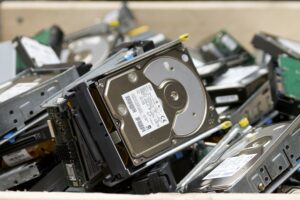
Data Wiping software works by writing random data over the data already on the drive. Overwriting ensures that no historic data can be read or recovered rendering the device safe for reuse.
However, drives that are known to be faulty need to be treated differently. Just because a drive is deemed to be not functioning, does not mean that data can't be retrieved. The only way to ensure data sanitisation will be by physical data destruction or shredding.
Hard Drive Shredding is the method of physically destroying the media by cutting the drive into pieces. A 6mm cut is more than sufficient for more applications.
Shredding the drive renders the drive unusable and the remaining waste can be refined & recycled for its raw materials (metals).
Make your choice
Depending on individual risk management comfort levels, it’s well known for companies to have a ‘shred everything’ philosophy. While it provides a high level of data security, it is the least environmentally friendly approach. Knowing the type of data and where the drive has come from is paramount in making the appropriate decision on the best data sanitisation method. The UK Government, National Cyber Security Centre (NCSC) has additional information that can be found here. If you are looking for a partner to guide and provide data sanitisation services then take a look at our dedicated webpage.
Can you repair a RAID controller?
Yes, you can repair a RAID controller.
The simple answer is; Yes, you can repair a RAID controller. But before we get into the nuts and bolts. What actually is a RAID controller and where do they come from?
What is a RAID Controller?
The RAID controller is a piece of hardware that sits within a Storage Array of Hard Drives. It manages the distribution of files and data across multiple hard drives so that the data is protected to increase performance and storage capacity. There are many RAID configurations, all with their own benefits, you can read about it on the Gartner Glossary here, it's too complex for now.
RAID Controllers can vary hugely in cost and performance depending on their application. Departmental or desktop solutions (NAS – Network attached Storage) could cost as low as just a few hundred pounds. However, enterprise-level Storage Arrays (SAN – Storage area network), typically used in tier-one data centres can cost hundreds of thousands.
The many manufacturers of Storage Arrays.
There are many manufacturers of Storage Arrays and a number of the large OEMs, like HPE, Fujitsu, Quantum and Dell with their MD Series have remarketed solutions created by other lesser know vendors, such as Dot Hill and Xyratex. OEMs have also acquired vendors, such as; EqualLogic, Compellent & 3PAR to add them to their portfolios.
Who can repair a RAID Controller?
As we’ve discussed, it’s easy to see that there’s a huge variety of Storage Array Solutions, each with its own RAID controllers and configurations.
So, when it comes to repairing, it’s very much a specialist activity. As with any piece of computer hardware, faults could be hardware defects or corrupt software/firmware. Fault debugging can take time and may well include PCB rework and repair to a component level. It’s imperative you have access to the appropriate Storage Array test-beds to provide full in situ checks to confirm full and correct operation.
As you can appreciate with this somewhat minefield, it’s rather fortunate that Gentronics Solutions does have the in-house repair centre with the capability of servicing the widest range of RAID controllers, including; NetApp, IBM, Dot Hill (Quantum, Fujitsu, HP MSA, Dell MD Series), HP 3PAR & EVA, Dell EqualLogic, Dell EMC and Nexsan to name a few.
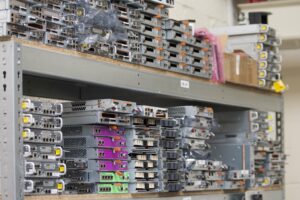 Obviously, a Storage Array with a defective RAID controller can be a catastrophic event. At Gentronics, we do have good/tested stock on the shelf ready to supply or provide an advance-exchange repair.
Obviously, a Storage Array with a defective RAID controller can be a catastrophic event. At Gentronics, we do have good/tested stock on the shelf ready to supply or provide an advance-exchange repair.
If you would like further assistance; please contact us or click here to find out more.
Hardware Support providers see benefit of repair
Why now is this having a larger impact than ever?
Hardware Support providers see the benefits of repair. Why now is this having a larger impact than ever? We’re all aware of the global supply chain issues and not only within the ICT sector. Some of the largest IT manufacturers are quoting lead times of over 12 months on the supply of new products.
The pandemic has fuelled supply chain issues. Sanctions on countries that play a key role in semiconductor raw material supplies have further exacerbated the issue. Also, demand is simply outstripping supply. However, it’s not all doom and gloom, there is a simple & proven solution that needs to be promoted; ‘Repair’.
Financial pressures
Over the last decade, competitive pressures on company finances have forced TPMs & Support Providers to adopt certain behaviours, such as; the reduction of spare-part inventory, and the use of just-in-time supply. Many maintenance providers' processes are to scrap & recycle failed parts. The issue with this philosophy is we are depleting parts to return to the supply chain, for future service calls. This only serves to further compound the issue. Ultimately it will drive up the costs of parts as they become harder to locate.
The SIA (Service Industry Association) is also trying to promote best practices across the TPM and service industry through its regular regional & annual networking meetings.
The current state
Unfortunately, OEMs, looking to grow profits, have only fuelled the issue by designing products that are not repair-friendly. Typically, this is done by locking devices with secure software & code or simply using materials in production that prohibit repair (like the use of resins). Organisations, such as The Repair Association & Free ICT Europe, are lobbying global policymakers and governments to create legislation to prevent restrictive practices and promote a fair and sustainable market.
Is a better system possible?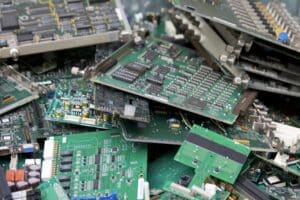
The solution is to locate a repair specialist who possesses the appropriate skills. There are many organisations across the globe that can do just that, from Tape Drives to PCB rework, cache batteries to POS (Point-of-Sale). Many of these repair providers also offer Advance-Exchange programs, which enable that just-in-time cost-saving ideology but ensure the defective part re-enters the repair loop to promote reuse.
The reality is, that if we don’t repair it, we’ll simply run out of parts. We must keep the repair sector ecosystem alive. Repair also yields other benefits from a sustainability perspective; reuse is significantly better than recycling for our environment with a reduction in e-waste. Hardware Support providers seeing the benefit of repair, have adopted strong reuse and repair ethos are now seeing the benefits.
Gentronics Solutions provide a full range of Data Centre equipment-focused repair services. Find out more here.
How to best repair a Tape Drive?
So, where do we start?
Before you grab your T8 Torx Screwdriver. How do you repair or maybe not repair a Tape Drive? Can this be done by the enthusiast or is it best left to the professional? Over the last 50 years, Tape products have developed tremendously into highly sophisticated pieces of hardware. Back in the mid-20th century tape units weighed in at a hefty 40+ kilos and with a dazzling capacity of 170MB across 9 data tracks, were very much state-of-the-art.
Back in the day
During the latter part of the last century and into the 2000’s we had an array of products and formats. The choice was huge; 8mm Helical Scan, 4mm DAT, DLT, and QIC, from companies like; Exabyte, Quantum, HP, IBM, Tandberg and Sony.
Still very much current technology
To be fair, Tape is now a little more niche but still plays an incredibly important role. OK, it may not be the primary storage medium it was back in the day, but it still delivers the cheapest cost per terabyte of any data storage. Its green credentials are not to be sniffed at either. Unlike Disk Arrays that run 24x7 and need huge amounts of expensive cooling, tape can sit idle until required to perform. As tape is primarily near-line, there are some real data security advantages, including the likes of malware attacks. Some of the world’s largest data-centre providers are believed to be using tape. Anyhow, I’ll get off my tape-drive soapbox now.
Complex technology
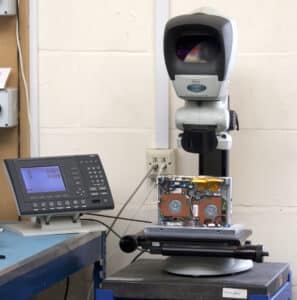
Back to the product of today, LTO (Linear Tape Open) has become the de facto standard. It delivers capacities of up to 45 TB per cartridge (with the latest (LTO-9), with lightning-fast transfer rates. But even the previous versions of the LTO technology LTO-3, 4, 5 and onwards were very sophisticated devices. The heads themselves work to minute tolerances and are more akin to the technology used in Hard Drives. By their nature, the heads are extremely sensitive to ESD (Electrostatic discharge) and have to be handled with great care and precision. All head channels need to be tested to confirm they are performing within specifications. The loading mechanism and interface performance need to be checked. So, it's no mean feat.
So, how do you repair or maybe not repair a Tape Drive?
Good news, you can put away that T8. Our engineers, who have on average 20+ years of tape drive repair experience, are more than happy to give you a hand. Gentronics can fully repair & refurbish modern LTO products, but also the full range of legacy devices we mentioned earlier. Using a blend of in-house developed software & test tools as we as original software developed by the manufacturers, we can restore your devices to full health, and to ‘back up’ that statement (excuse the pun), we’re more than happy to warranty our work.

